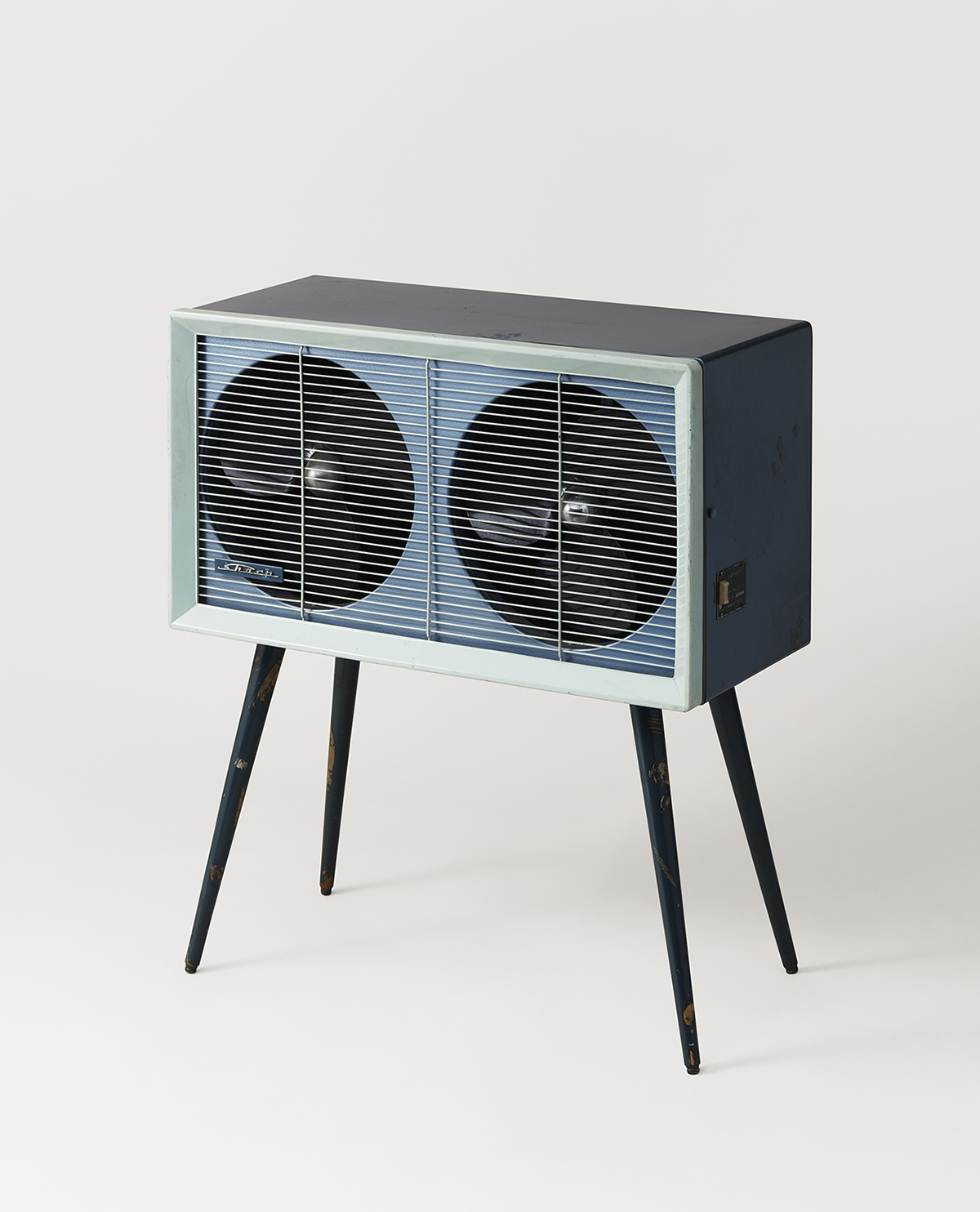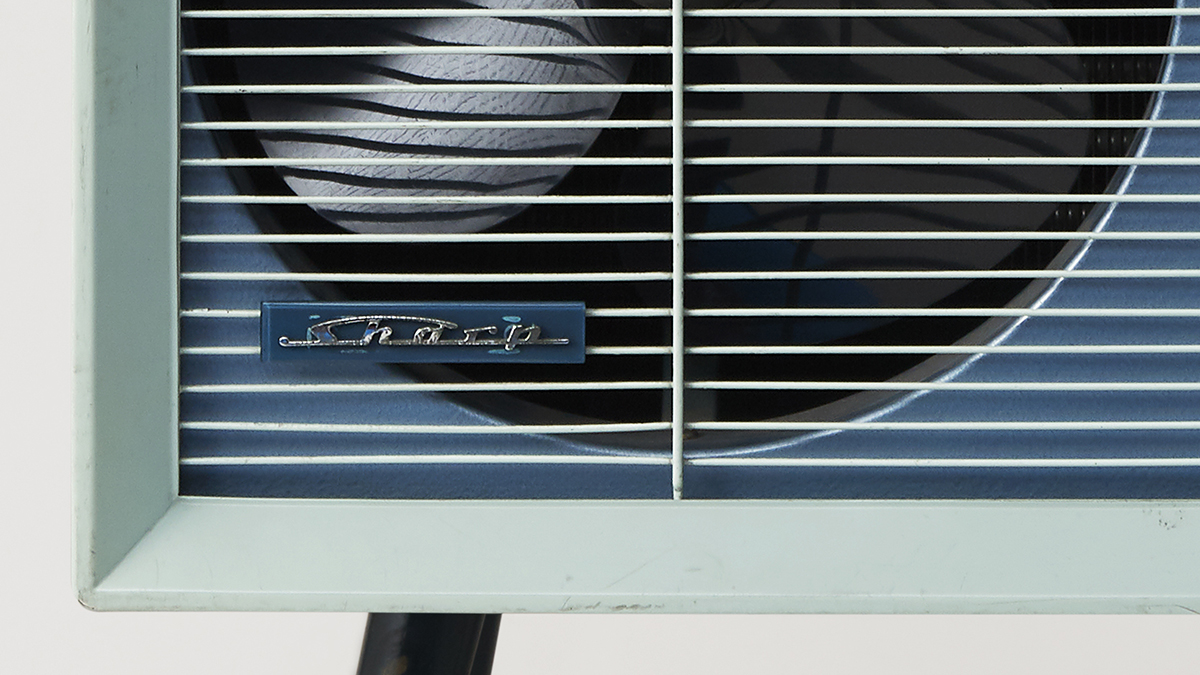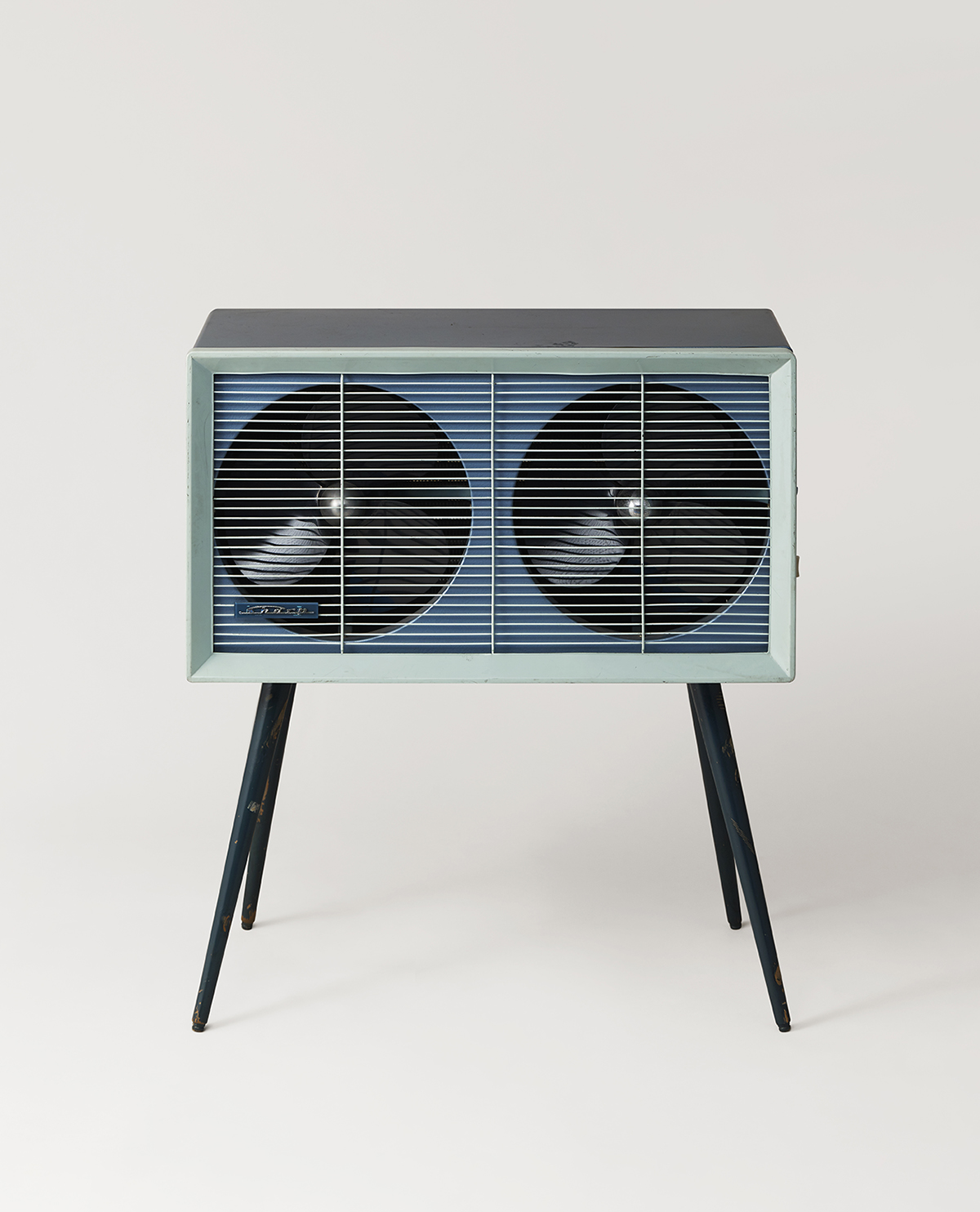IN HISTORY
1958 Water-cooled Air-conditioner
“IN HISTORY”: The history of Sharp and design – A joint project with Sharp Technology Innovation Museum commemorating its 40th anniversary
Hello, my name is Fujiwara, and I am from the Sharp Technology Innovation Museum. This is a series in which Sharp Museum guides myself and Nakatani talk about Sharp products and history. I hope this will be an opportunity for you to get you interested in Sharp’s history.
The star of this story is the Water-cooled Air-conditioner RC-101.

An air conditioner that uses well water to cool the air
Standing tall on four smartly stretched legs is a water-cooled air conditioner using groundwater, launched in 1958! At 75 cm wide, 34 cm deep, and 84 cm tall, it is about the size of a small bookshelf. It is large for a display item, so it stands out and looks imposing when placed alongside other products.
This product generates a cool breeze by running cold well water through a heat exchanger with aluminum fins in a box installed on the top of the legs, and driving two fans on the front of the unit to exchange heat with the indoor air. As groundwater, which maintains a water temperature almost constantly throughout the year, is used as coolant, and the higher the temperature, the better the cooling effect, especially in hot summers. By all accounts, it was priced at \36,500 and sold well. Air conditioners at that time were luxury items, costing more than \200,000, so it is understandable why RC-101 sold well. (The monthly starting salary for government workers who were high school graduates in Japan at that time was \6,500.)

Four-legged water-cooled air conditioner
Home appliances produced at that time often had four legs. This four-legged style was especially popular for televisions. In the midst of rapid economic growth, households were buying home appliances that cost many times more than their monthly salaries. Many new televisions and luxury stereos were thought to be luxurious and well-crafted, and hence called “furniture-style.” I believe that water-cooled air conditioners followed this trend and were designed in dashing style with four legs. The blades inside the air conditioner are reminiscent of those used in electric fans. It would be interesting to compare them side by side with modern air conditioners.

Cooling off in the Japanese summer
People at the time also made good use of water to feel a little cooler by splashing water on the ground in front of their houses and gardens so that a cool breeze would pass through the house, fillng pots with water to give the appearance of looking cool and admire goldfish swimming inside the pots, and eating summer vegetables cooled by floating them in water that had been pumped from underground. Outside, people gathered by the water to cool off, strolling along the river banks and around ponds to enjoy the cool breeze, or enjoying the river breeze on a traditional Japanese pleasure boat by opening all the shoji screens. The key word here is “water.” Nagashi somen (noodles flowing in water), tokoroten (jelly noodles), and mizuyokan (a chilled bar of gelled sweet bean paste)—these are all Japanese summer foods.
It seems that there used to be seasonal traditions back then: watermelons floating in a washtub were spun around by the force of water released from a water-cooled air conditioner via a drainage hose. Ah, these sorts of traditions were very common 60 or more years ago.
That’s all for this time! Next time, we will introduce the 1bit Amplifier.
[Sharp Museum: Commemorating its 40th anniversary in November 2021]
This is a series written by Sharp Technology Innovation Museum guides Fujiwara and Nakatani about Sharp products and history. We hope this will be an opportunity get you interested in Sharp’s history.